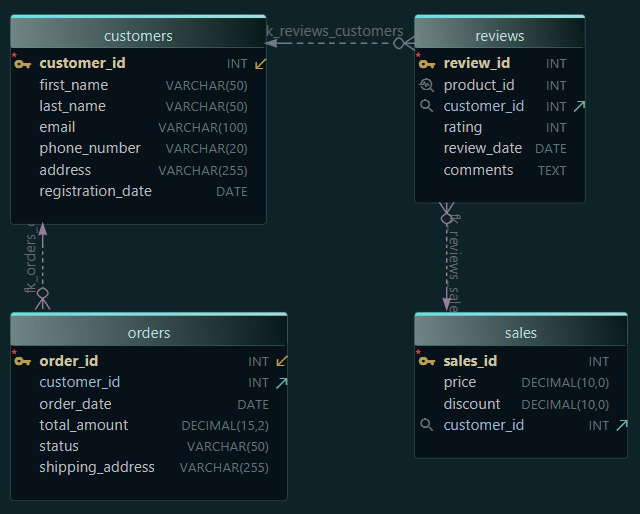How to Handle Large PostgreSQL Schemas with a GUI Tool

Handle Massive Databases
Design even with 10,000+ tables.At first, a database looks simple. A few tables, some relationships, and you know where everything is.
But when the schema grows to hundreds or even thousands of tables, things get difficult:
- Finding tables takes time,
- Making changes feels risky,
- And keeping different environments in sync is hard.
This is where a visual tool like DbSchema helps.
Everything you do in DbSchema is stored in a design model (.dbs file) that you can reopen anytime or share with your team.
Read more about the design model →
Here’s what you really need from a tool when working with a very large PostgreSQL schema, and how DbSchema provides it:
1. Clarity: See the Schema Visually
- Split thousands of tables into smaller, focused diagrams.
- Search by table or column name and jump straight to it.
- Use colors, groups, and notes to highlight areas like HR, Orders, or Inventory.
This makes the schema understandable again, even with more than 10,000 tables.

2. Control: Make Safe Changes
- Edit tables visually in the diagram (add columns, change datatypes).
- Use Schema Compare to check differences between your model and the live database.
- Generate migration scripts automatically, so you don’t miss anything.
Example migration:
ALTER TABLE company.orders
ADD COLUMN discount NUMERIC(5,2);
This gives you confidence that changes won’t break production.

3. Environment Management: Keep Dev, Stage, and Prod in Sync
- Save multiple connections inside the same project.
- Switch between them with one click.
- Apply the same schema updates across all environments consistently.
Example:
company_dev
company_stage
company_prod

This saves you from human errors and keeps all teams aligned.
4. Documentation: Share Knowledge Easily
DbSchema can generate HTML5 documentation that is:
- Complete - includes tables, columns, indexes, and foreign keys
- Visual - shows diagrams for better understanding
- Interactive - click and navigate between tables
- Searchable - find any table or column by name
- Shareable - publish it on an internal site
This stops everyone from asking you where things are and makes onboarding easier.
5. Data Tools: Work With the Schema, Not Just See It
- Use the Visual Query Builder for joins without memorizing columns.
- Explore data with the Relational Data Explorer to see how rows link across tables.
- Generate realistic test data (100k+ rows) to check performance before deploying changes.
This way, you can actually use the schema, not just look at it.
5. Automation Scripts
With Automation Scripts in Groovy, you can:
- create monthly partitions,
- export schema snapshots,
- check for missing indexes,
- or clean up old data.
In DbSchema you can write Automation Scripts in Groovy. They run directly from the project, so you don’t have to manage external tools.
Example: create next month’s partition automatically
def nextMonth = java.time.LocalDate.now().plusMonths(1)
def start = nextMonth.withDayOfMonth(1)
def end = start.plusMonths(1)
def sql = """
CREATE TABLE company.transactions_${start.getYear()}_${String.format("%02d", start.getMonthValue())}
PARTITION OF company.transactions
FOR VALUES FROM ('${start}') TO ('${end}');
"""
db.execute(sql)
println "Partition for ${start.getMonth()} ${start.getYear()} created."
Wrap-Up
Large PostgreSQL schemas are not easy to handle. But with DbSchema you can:
- split the schema into smaller diagrams,
- make safe changes,
- manage multiple environments,
- generate documentation,
- explore and test your data,
- and automate the boring tasks.
This workflow keeps your database clear and manageable, even when it grows beyond 10,000 tables.
Try it yourself with DbSchema. Download here.







